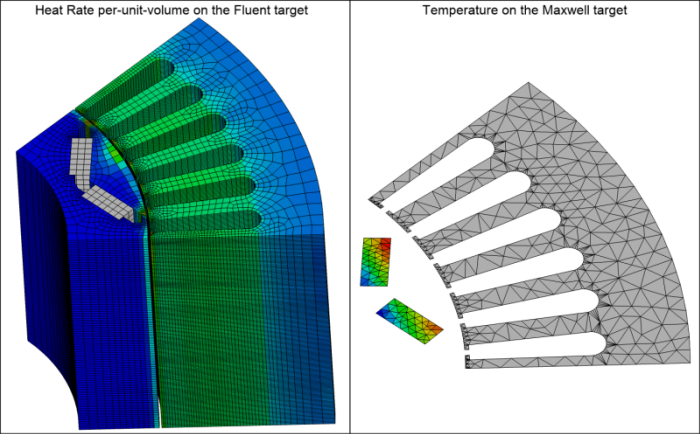This tutorial demonstrates a steady electromagnetic-thermal co-simulation of a permanent magnet electric motor. The main components of the motor are a stainless-steel shaft, a rotor, and a stator. The rotor consists of an M19_26G core and two steel (N5211) magnets. The stator consists of an M19_26G yoke and teeth, with copper phases between the teeth.
You can assume a uniform power-loss distribution along the axial direction for Maxwell's transient 2D solution, so that you can both reduce Maxwell's computation time and explore the full parametric space by simulating only an axial slice for both participants.
On the electromagnetic side, Maxwell simulates the electromagnetic coupling between the magnet, rotor, and stator components. On the thermal side, Fluent simulates the thermal coupling between the rotor and stator components. The rotor and stator are separated by two air-like solid zones.
Note: In the main version of the tutorial, these air-like solid bodies are stationary. However, to allow for further exploration of the case, the tutorial input package includes files for a variation on the case which has a rotation of 15000 rpm defined for each of these solid zones.
Fluent receives Maxwell's losses and applies them as steady losses to the axial segment of its 3D model. It then executes the thermal analysis and sends the calculated material temperatures back to Maxwell.
When the temperature data are sent back to Maxwell, it is mapped only to the magnets, which are made of a temperature-dependent material. The temperature-dependent material properties are updated and used in Maxwell's next computation. The co-simulation proceeds until the solution converges.




